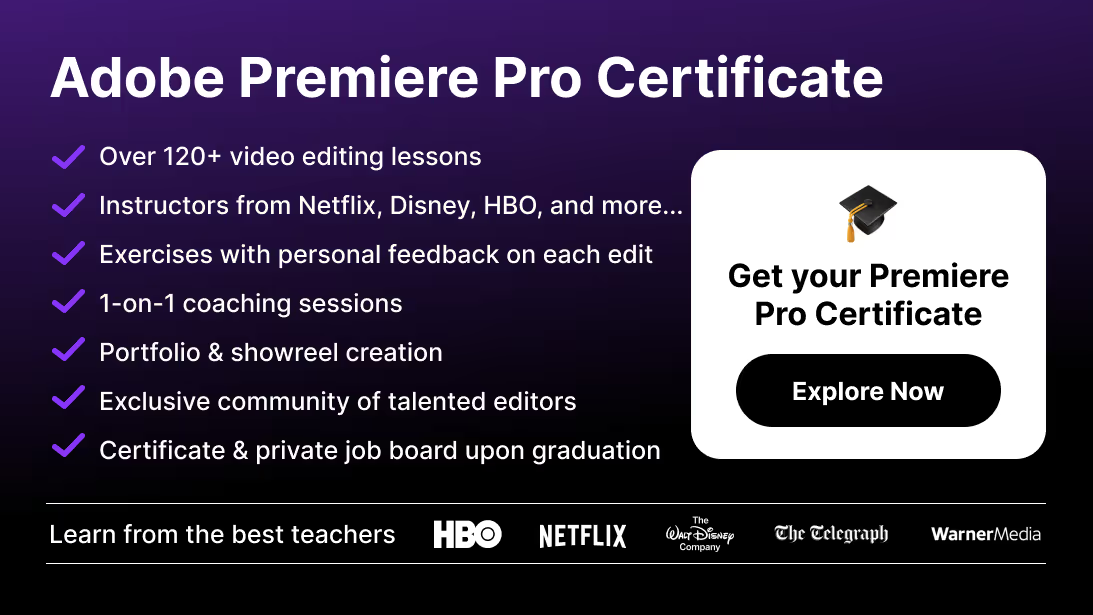Rendering is a critical part of video editing in Premiere Pro. Whether you're creating cinematic films, YouTube videos, or corporate projects, understanding how to efficiently render ensures smoother playback and a polished final product. Rendering allows you to preview effects, transitions, and adjustments in real time without lag, which is crucial for evaluating your edits and achieving professional results.
Video Tutorial
Render in Premiere Pro | Tutorial
1. Render Specific Sections Using In and Out Points
If you only need to preview a portion of your timeline, you can render a specific section using In and Out points:
- Mark the Start Point (In): Move the playhead to the start of the section you want to render and press
Ion your keyboard. - Mark the End Point (Out): Move the playhead to the end of the section and press
O. - Render In to Out: Go to
Sequence > Render In to Out. Premiere Pro will process the section between your In and Out points.
If you're working with multiple transitions or heavy color adjustments, learning how to add effects can help you optimize what needs rendering.
2. Render the Entire Timeline
To ensure smooth playback for the entire project:
- Go to
Sequence > Render Entire Work Area. - Premiere Pro will render every effect, transition, and clip in your timeline.
Basic transformations such as rotation can also impact preview performance, so here’s how to rotate a clip if you’re adjusting orientation before rendering.
3. Render Effects Only
If you only need to render applied effects without processing the entire clip:
- Go to
Sequence > Render Effects In to Out. - This saves time by processing only the clips with effects applied.
If you’re adjusting framing or resizing clips, check out how to crop videos to manage those edits efficiently before rendering.
What Do the Red, Yellow, and Green Lines Mean in Premiere Pro?
Understanding the colored lines above your timeline is key to efficient rendering:
- Red Line: Indicates unrendered sections that may cause choppy playback.
- Yellow Line: Premiere Pro can preview these sections without rendering, but performance may vary depending on your system.
- Green Line: Fully rendered sections that will play back smoothly.
Pro Tips for Rendering in Premiere Pro
1. Use Keyboard Shortcuts
Speed up your workflow with these rendering shortcuts:
- Render In to Out: Press
Enterto render the section between your In and Out points. - Render Effects Only: Press
Shift + Enterto process effects without rendering the entire clip.
Some time-based effects—like reversing footage—often require rendering for smooth playback. Here’s how to reverse a clip in Premiere Pro.
2. Optimize Your Timeline
- Mute or disable unnecessary tracks to speed up rendering.
- Use proxies for high-resolution footage to reduce processing strain on your system.
3. Adjust Playback Resolution
If you’re experiencing lag during playback, reduce the playback resolution to Half or Quarter. This won’t affect your final export quality but will improve real-time performance.
4. Use Render Selection
For complex projects, render specific parts of your timeline using the Render Selection option to save time and resources.
Advanced Rendering Techniques
1. Export Pre-Rendered Footage
If you’ve already rendered your timeline, you can use the pre-rendered files during export to speed up the process:
- In the Export Settings window, enable Use Previews.
- Premiere Pro will use the rendered files, reducing export time significantly.
2. Rendering Colors and Effects
Focus on rendering specific color corrections or effects that are resource-intensive:
- Select the clips with color adjustments or effects applied.
- Go to
Sequence > Render Effects In to Outto process only those clips.
3. Use Adobe Media Encoder for Large Projects
For large or complex projects, send your timeline to Adobe Media Encoder. This allows you to continue working in Premiere Pro while your project renders in the background.
Common Rendering Mistakes to Avoid
1. Forgetting In and Out Points
Always set accurate In and Out points. Incorrect points can result in rendering the wrong section of your timeline.
2. Rendering Too Often
Rendering the entire timeline repeatedly can waste time. Use targeted rendering (In to Out or Effects Only) for efficiency.
3. Ignoring Red Lines
Unrendered red-line sections can cause playback issues. Always render these areas for smoother previews.
Why Rendering Is Crucial in Premiere Pro
1. Smooth Playback
Unrendered effects or transitions can cause playback to stutter or lag. Rendering ensures your timeline runs smoothly, allowing you to focus on the creative aspects of editing.
2. Accurate Previews
Rendering lets you see how effects, color corrections, or transitions will appear in the final video, helping you make more informed editing decisions.
3. Optimized Workflow
By rendering sections of your timeline, you can work more efficiently without waiting for Premiere Pro to process complex edits during playback.
4. High-Quality Exports
Rendered projects are easier to export, as much of the processing has already been done. This results in faster export times and fewer errors.
Once your timeline is fully rendered, follow this guide on how to export high-quality videos to ensure the cleanest possible final result.
Conclusion: Master Rendering in Premiere Pro
Rendering is a vital part of the video editing process, ensuring smooth playback, accurate previews, and faster exports. Whether you’re working on a quick YouTube video or a detailed cinematic project, mastering rendering techniques in Premiere Pro will save you time and elevate your final product.
Ready to take your skills to the next level? Enroll in Miracamp's Adobe Premiere Pro Course and learn everything from rendering techniques to advanced editing workflows.
FAQ Rendering in Premiere Pro
1. What does rendering mean in Premiere Pro?
Rendering in Premiere Pro processes your timeline edits, effects, and transitions into preview files for smooth playback and accurate previews.
2. How do I render in Premiere Pro?
Use In and Out points to mark a section of your timeline, then go to Sequence > Render In to Out.
3. What do the red, yellow, and green lines mean?
- Red Line: Unrendered section, likely to lag.
- Yellow Line: Previewable without rendering, but performance may vary.
- Green Line: Fully rendered section, ensuring smooth playback.
4. How do I speed up rendering?
- Use keyboard shortcuts like
Enterfor rendering In to Out. - Render only effects or specific sections.
- Reduce playback resolution or use proxies.
5. Can I export my project without rendering?
Yes, but unrendered sections may slow down the export process or cause quality issues. Use the Use Previews option during export to speed up rendering.
Master rendering in Premiere Pro and take your editing skills to the next level!






